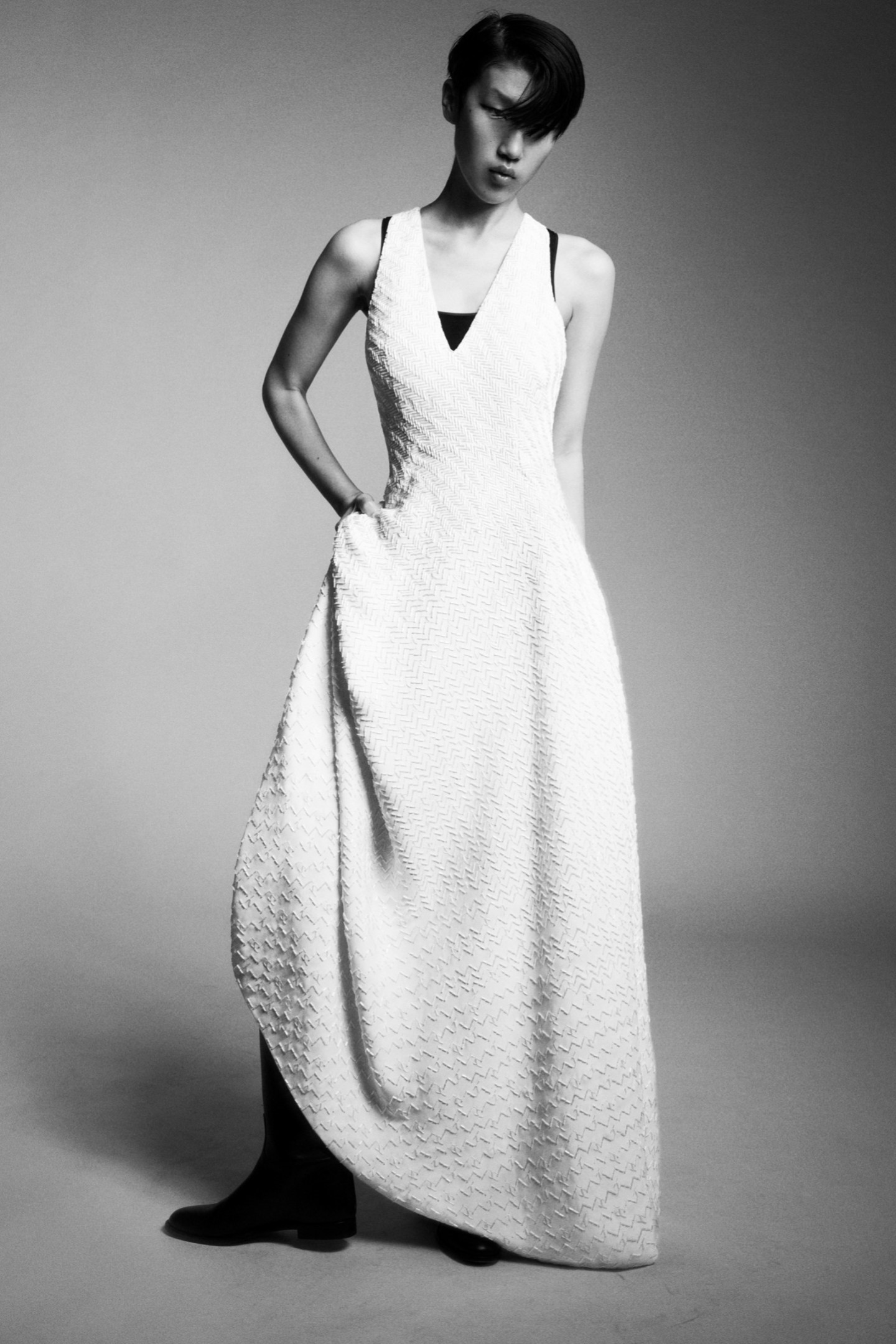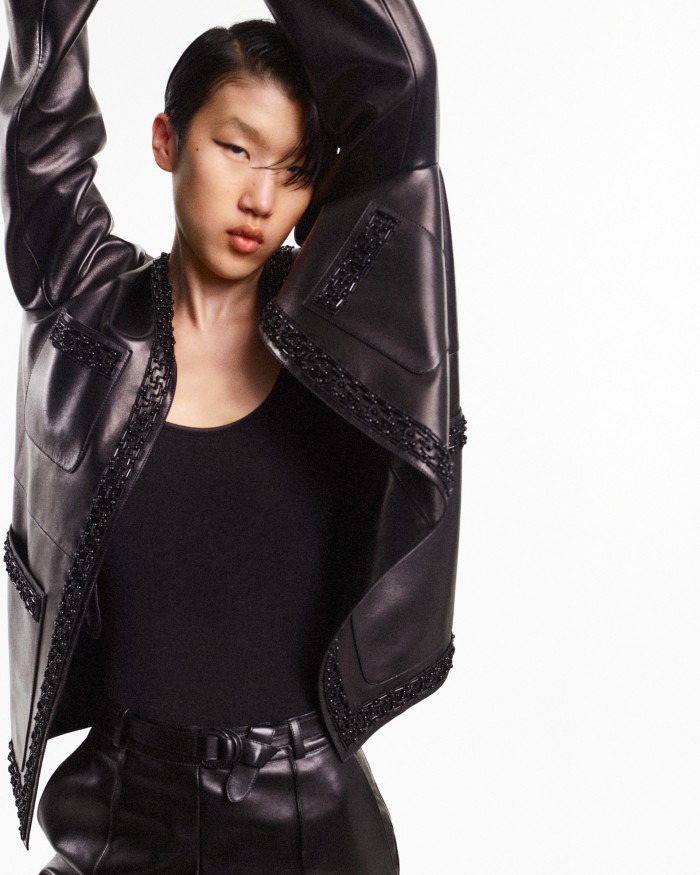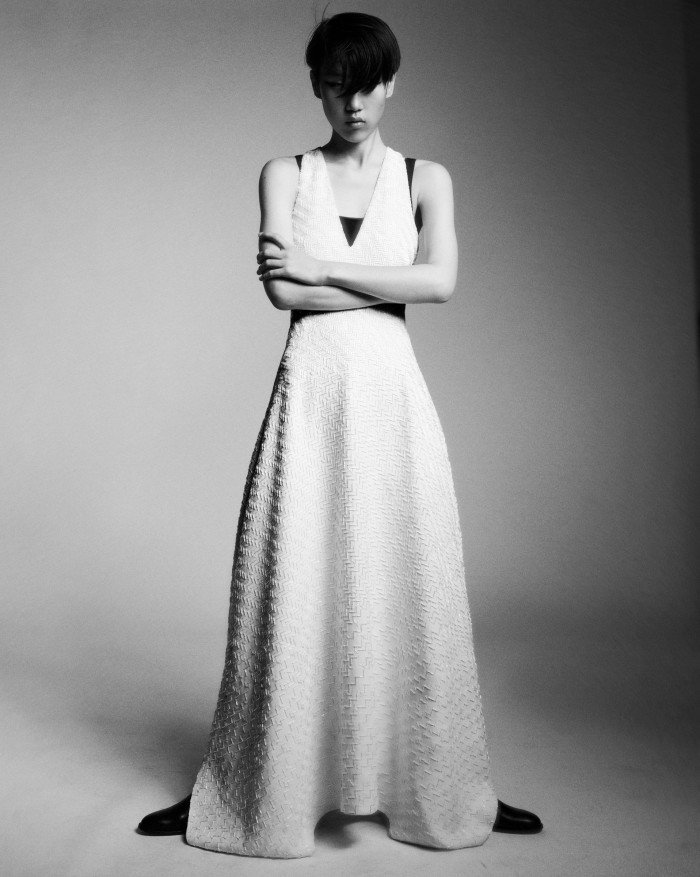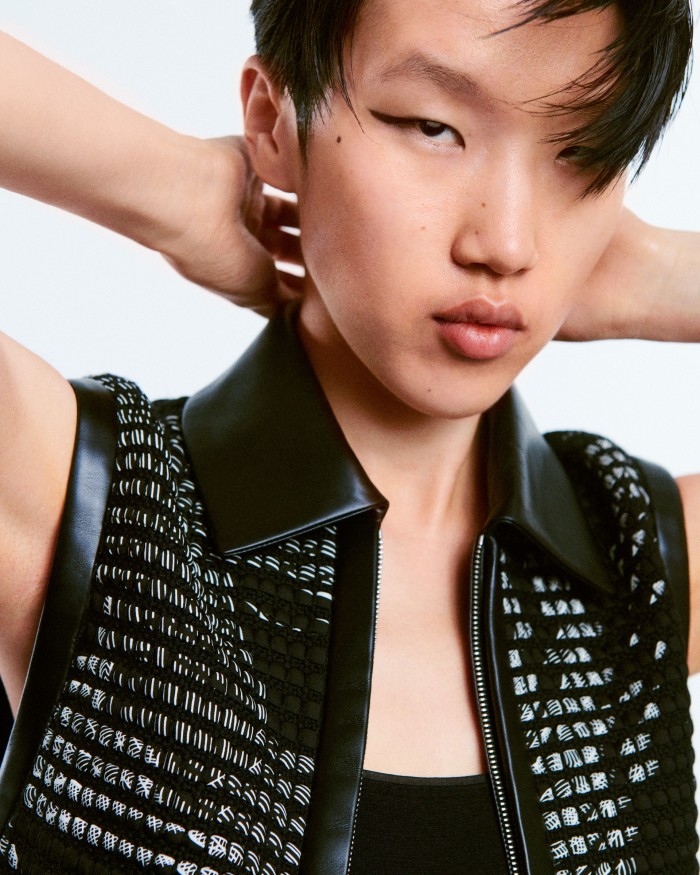Hermès takes the reins in upcycling

Simply sign up to the Fashion myFT Digest -- delivered directly to your inbox.
Hermès is not the kind of company to make grand statements about sustainability, yet in its resolute commitment to creating impeccably made objects in small volumes, the 186-year-old luxury house can still feel more radical than most. Even today, virtually everything continues to be made by hand: its signature Kelly bags, first launched in the ’30s, are hand-stitched in Hermès workshops just outside Paris, taking a single craftsperson an average of 15 to 20 hours to make. Its famous silk scarves, meanwhile, take around two years to produce, from the design stage right up to the hand-rolling and stitching of the edges.
The pinnacle of the maison’s dedication to slow craftsmanship and heritage is its Hors-Série savoir-faire capsule collection. First conceived in 2020 and released every two years, Hors-Série (French for special or limited edition) is the ultimate showcase of the skills and expertise of Hermès’ many métiers, as well as a chance for deadstock fabrics and materials from previous seasons to be spliced and spun into new creations.

“What makes this collection different is that it isn’t anchored in a specific season,” says the house’s artistic director of women’s ready-to-wear, Nadège Vanhée. The design process, she says, is “a dialogue between the fabric and the techniques of tailoring and embellishment”.
For her latest Hors-Série capsule, launching in stores in January, Vanhée drew on a classic palette of black, white, off-white and dark brown to create an 18-look edit of ultra-luxe seasonless wardrobe staples that comprise more everyday items such as leather and cashmere coats, as well as sparkly two-piece sets and evening gowns. “Fabrics led the way — that is to say, the rediscovery of them,” says Vanhée, who upcycled deadstock fabrics such as scraps of organza and dormant stocks of silk scarves — artfully cut into ribbons and woven into a skirt using a hand loom.

This being Hermès, the art of upcycling has been elevated to new heights. “The idea was to use natural, almost humble materials that aren’t necessarily associated with sophistication, and to integrate them with our signature materials such as cashmere, silk and leather, transforming them into outstanding elements,” says Vanhée. A little black dress, for example, rendered in silk jacquard, is adorned with playful pom-poms, shimmering glass beads and polished horn.
The maison’s heritage and motifs were a key inspiration. The decorative panels on a supple black leather jacket mimic the Greek frieze railings of Hermès’s flagship store at 24 rue du Faubourg Saint-Honoré. The black and gold geometric beadwork on the collar of a coat replicates the patterns of the mosaic tiles on the store’s floor. What seems at first glance like a traditional floral lace dress is in fact a guipure lace pattern inspired by the reins, bits and bridles illustrated on the house’s famous Le Mors à la Connétable scarf — a nod to its equestrian roots.

The collection is also a means of preserving age-old traditional techniques and craft skills. The sequin-embroidered silk passementerie on a velvet kaftan uses a technique dating back to the 1850s known as bigoudis — because of the way it mimics hair being wrapped around curlers. It was made by the last remaining artisan with this knowledge in Saint-Étienne, near Lyon — a region famous for making trimmings and ribbons in the 18th century. “It’s about cultivating our ability to transmit,” says Vanhée. “It’s important to keep the chain going, especially when it comes to oral knowledge. Ultimately, it’s about preserving the singularity of working by hand,” she adds. And what could be more luxurious than that?
Model, Jiashan Liu at Silent. Casting, Cheyma Hadji at Ben Grimes. Hair, Michal Bielecki. Make-up, Tiziana Raimondo at Home Agency. Digital operator, Martin Varret at Imagin Paris. Stylist’s assistants, Aylin Bayhan, Aniello Luca Migliaro and Tommaso Palamin. Production, Jason Le Berre at Home Agency. Special thanks to Studio Mezo and Imagin Paris
Comments